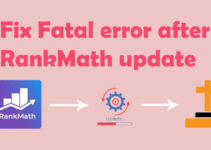If you have a blog or website, or if you work with anything related to the Internet, you’ll certainly need to know a bit about search engine optimization (SEO). SEO stands for Search Engine Optimization and simply refers to the process of making your domain name and website more visible in Search Engines . A good way to get started is to familiarize yourself with the most common SEO terms, and below you’ll find 10 of them.
1.Search Engine Marketing (SEM)
Search Engine Marketing (SEM) involves marketing services or products via search engines. SEM is divided into two main pillars: SEO and PPC. SEO stands for Search Engine Optimization, and it is the practice of optimizing websites to make their pages appear in the organic search results. PPC stands for Pay-Per-Click, and it is the practice of purchasing clicks from search engines. The clicks come from sponsored listings in the search results.
2. Backlink
Links originating from one website and pointing to another website or web page is called backlink. Search Engines see this as a sign that your site must have some useful information as other people and websites are referring to it.
3. Crawler
Also called search bot or spider, it’s a computer program that browses the web on behalf of search engines. The crawler will visit your site and analyse its content. They visit your site numerous times and will continue to visit as you make changes and add new content. This is how Search Engines keep their results relevant and up to date.
4. SERP
Stands for Search Engine Results Page. It’s basically the page you’ll get when you search for a specific keyword on Google or on other search engines. The amount of search traffic your website will receive depends on the rankings it will have inside the SERPs.
5. Title Tag
The title tag is literally the title of a web page, and it’s one of the most important factors inside Google’s search algorithm. It defines the blue link text that you click on in a search result. It also appears in the top of your browser window or tab. Search Engines use the title tag to define what your website is about.
6. Meta Tags
These are supplementary to your title tag. You can have a META description, which briefly describes what the page is about. The META description you set is often seen below the clickable link to your website in the SERPs as a summary. You can also set META keywords to let Search Engines know what terms should be relevant to the page.
7. Keywords
Keywords are those words which is used by search engines to determine the topic of a given web page. Keywords should be used on your site to ensure Search Engines can recognize what that page is about and therefore show that page to the correct searchers.
8. Pagerank
PageRank is an algorithm that Google uses to estimate the relative important of pages around the web. The higher the Pagerank the better. However, do not take this measurement as gospel. There are some low PR sites with great search visibility and some high PR sites with low visibility.
9. Sitemap
A sitemap is just what it sounds like. A map of your site that users and Search Engines can use to navigate your site more easily. It’s great to have a sitemap as it can help Search Engines identify all the pages on your site, some of which otherwise may not have been visited by the crawler.
10. Robots.txt
This is nothing more than a file, placed in the root of the domain, that is used to inform search bots about the structure of the website. For instance, via the robots.txt file it’s possible to block specific search robots and to restrict the access to specific folders of section inside the website.


